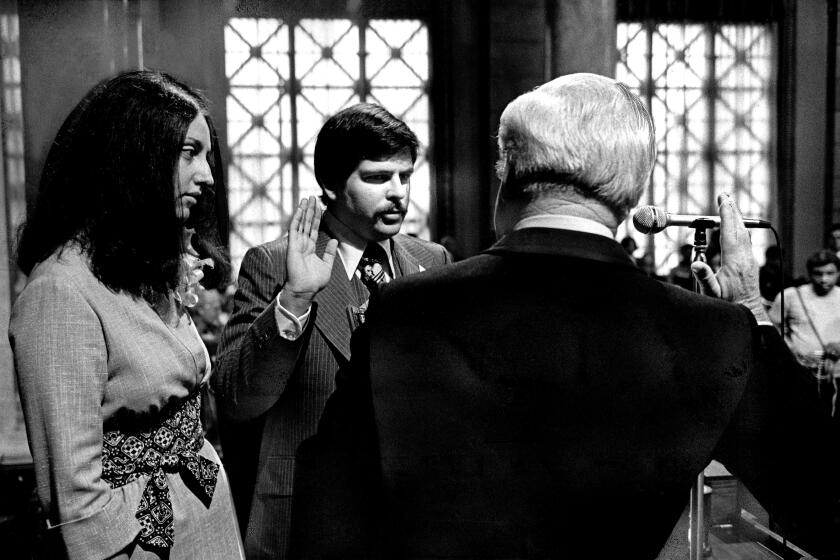The graphic novel ‘Blood of the Virgin’ brings ’70s L.A., grindhouse movie biz to gory life
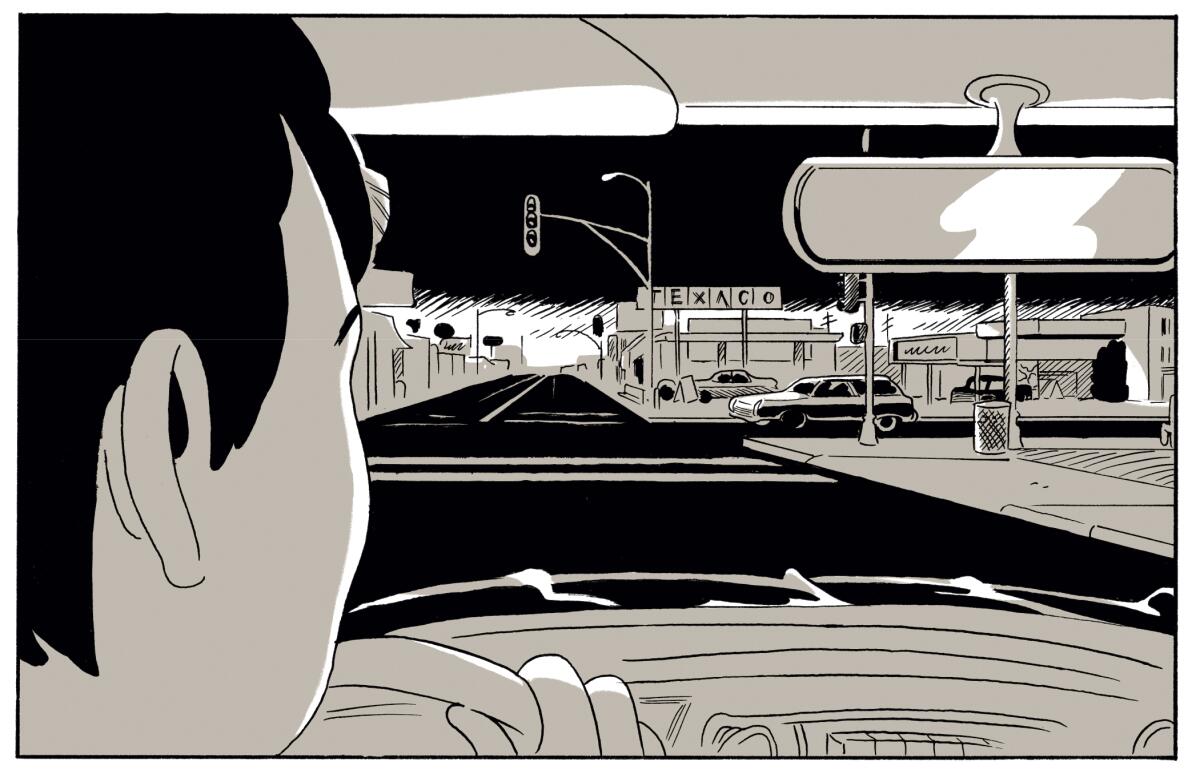
- Share via
Review
'Blood of the Virgin'
By Sammy Harkham
Pantheon: 296 pages, $30
If you buy books linked on our site, The Times may earn a commission from Bookshop.org, whose fees support independent bookstores.
Grindhouse wasn’t a movie genre afflicted by subtlety. The plots celebrated mayhem: chain-saw-wielding maniacs, murderous supernatural forces or a young woman on a revenge killing spree. There was fake blood (gallons of it), as well as gratuitous female nudity (cue the bouncing bosoms). And don’t forget the screamy posters that boasted, for one example, “the most violent, blood-spurting fight ever filmed!”
This ’70s-era genre may be fondly remembered by directors such as Quentin Tarantino and Robert Rodriguez, but these cheap flicks often inhabited a spot on the cinematic spectrum between god-awful and unwatchable. “Exploitation movies were like layers of grit wrapped around a few minutes of ‘the good stuff’ — full-frontal childbirth, the flaccid genitals of middle-aged sun worshippers, a woman being scalped,” wrote journalist and horror writer Grady Hendrix of grindhouse in 2007. “Savvy distributors with calculators for eyes grabbed on to these exploitable elements and flogged the hell out of them.”
Sammy Harkham‘s new graphic novel, “Blood of the Virgin,” carves out an imaginary corner of this pitiless sector of the movie industry and takes up residence.
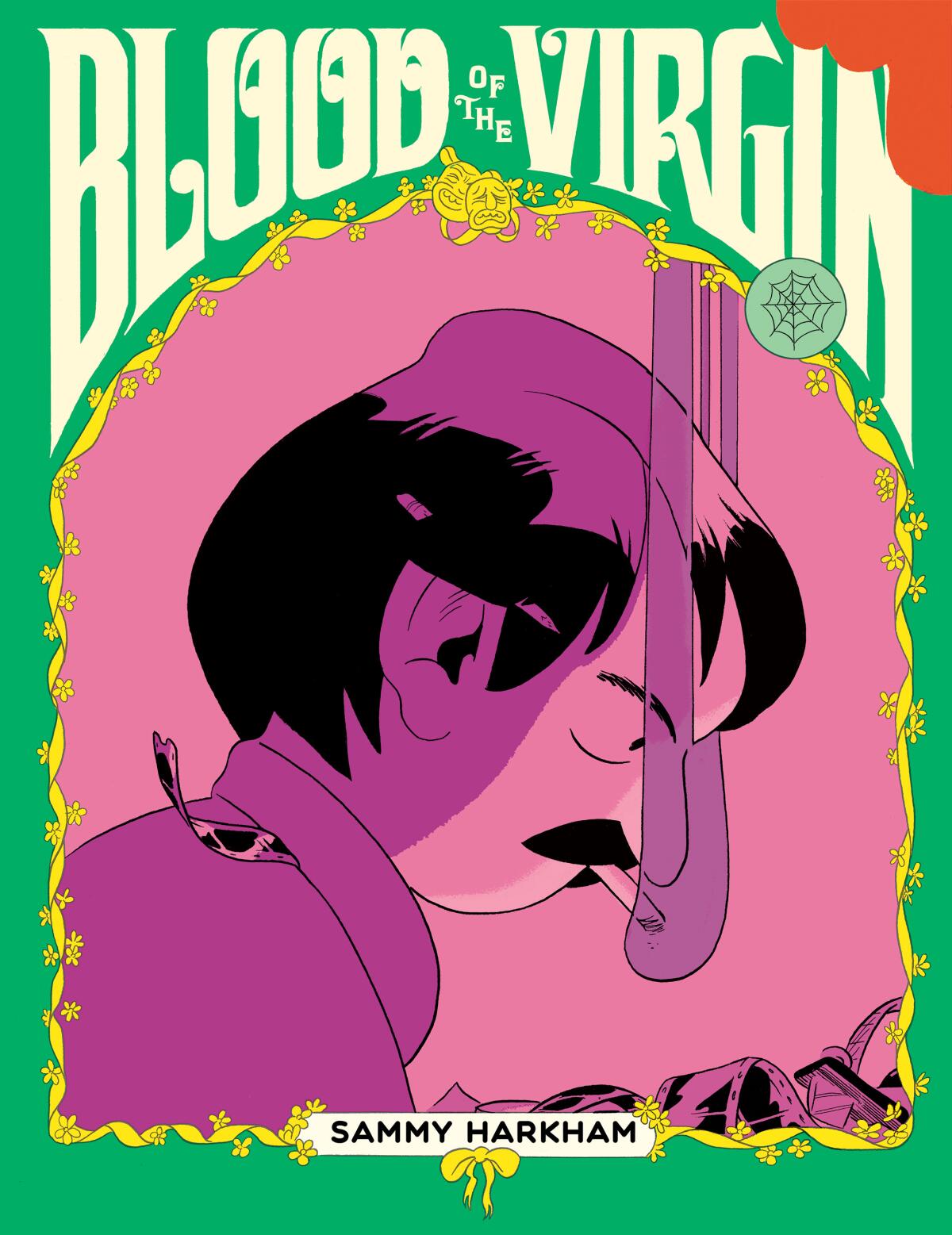
It is 1971 and Seymour, our protagonist, is a young immigrant — an Iraqi Jew raised in Australia — who toils as a movie editor for a grindhouse film studio in Los Angeles that bears the incongruous name of Reverie. There, he helps assemble pictures with names like “Cobra Women,” “Jungle Bitches” and “Sadist.” Naturally, he aspires to direct a screenplay of his own, titled “Blood of the Virgin.” (Nouvelle Vague, it ain’t.)
The real horror isn’t the film’s plot, but everything Seymour endures to get his picture made. There’s the impetuous studio boss who wants to hand the project over to another director who hacks away pages of dialogue. There’s the leading lady who projectile vomits a tuna sandwich on location. And there’s the financier who yanks funding in the middle of the shoot, preferring to use the money on tiling his roof. Don’t worry, one of Reverie’s honchos tells Seymour, “you’re an editor, you’ll make it work.”
Sammy Harkham, a city’s comics crusader
The messiness of Seymour’s professional life is paralleled by a chaotic personal life. Seymour and his wife, Ida — who is entirely unimpressed by the movie business — are new parents, and their infant has been steadily eroding their sanity and their sleep. Ida is exhausted and Seymour is too wrapped up in his movie (and getting schnockered at industry parties) to show much sympathy. He condescends; she bites back: “You always smile when you insult me.”
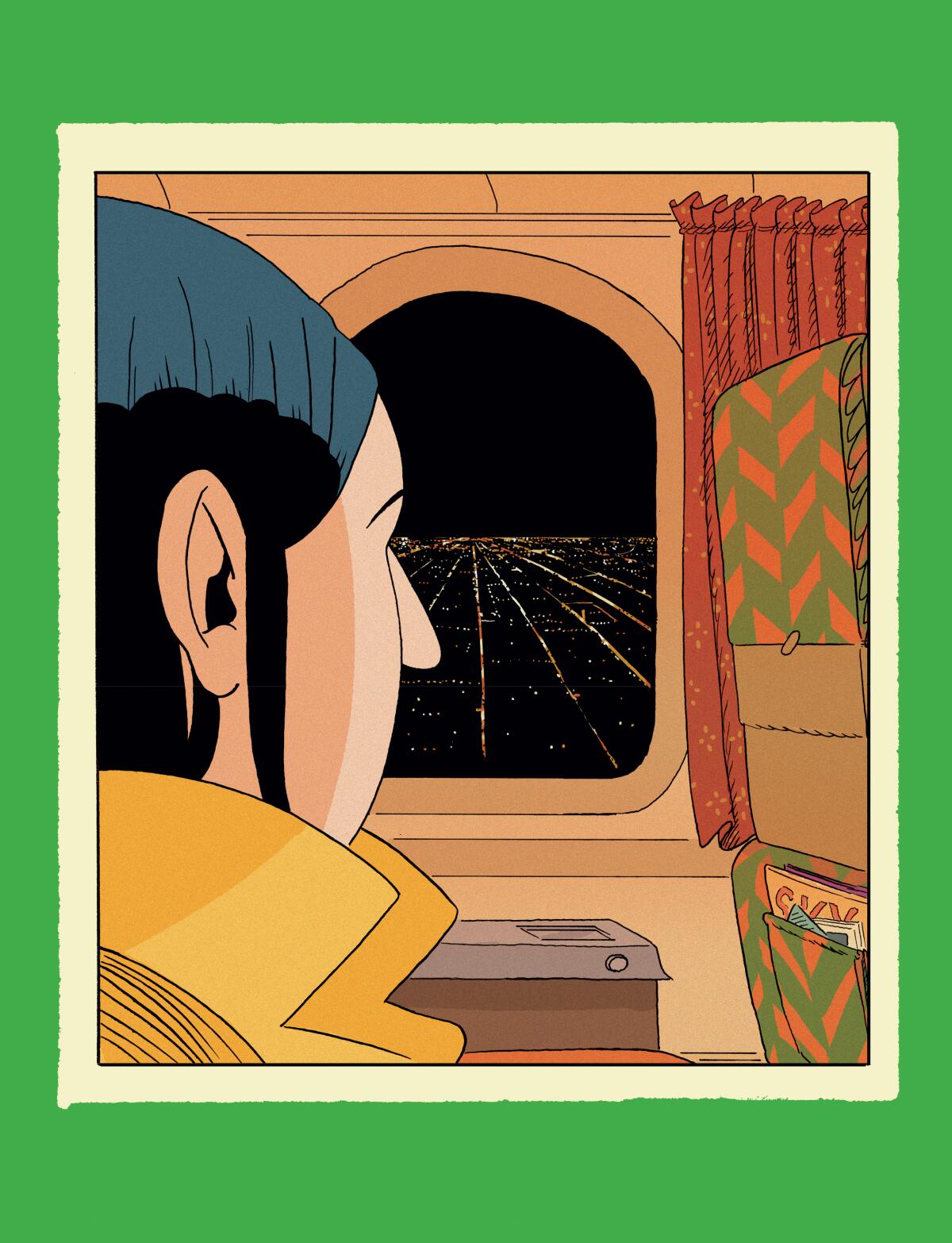
These parallel narratives are intersected by others that enter and exit the book: the story of Ida’s mother, a Hungarian immigrant who survived the Holocaust, as well as that of Joe Clayton, an impressionable Arizona cowboy with Hollywood stars in his eyes. In between are the workaday yarns of aspiring auteurs scratching out a living at the bottom rungs of the movie business.
In one scene, a special effects technician goes through the steps required to make a human head explode onscreen. Another takes us to a party at the studio boss’ house, where screenwriters and techs huddle in the kitchen and debate the merits of Michelangelo Antonioni. Back at work, they shoot a scene where a woman bursts into flames.
“I’m not really a horror guy,” says a sound man to a co-worker. “Me neither,” responds the colleague. Yet this is the world they labor in.
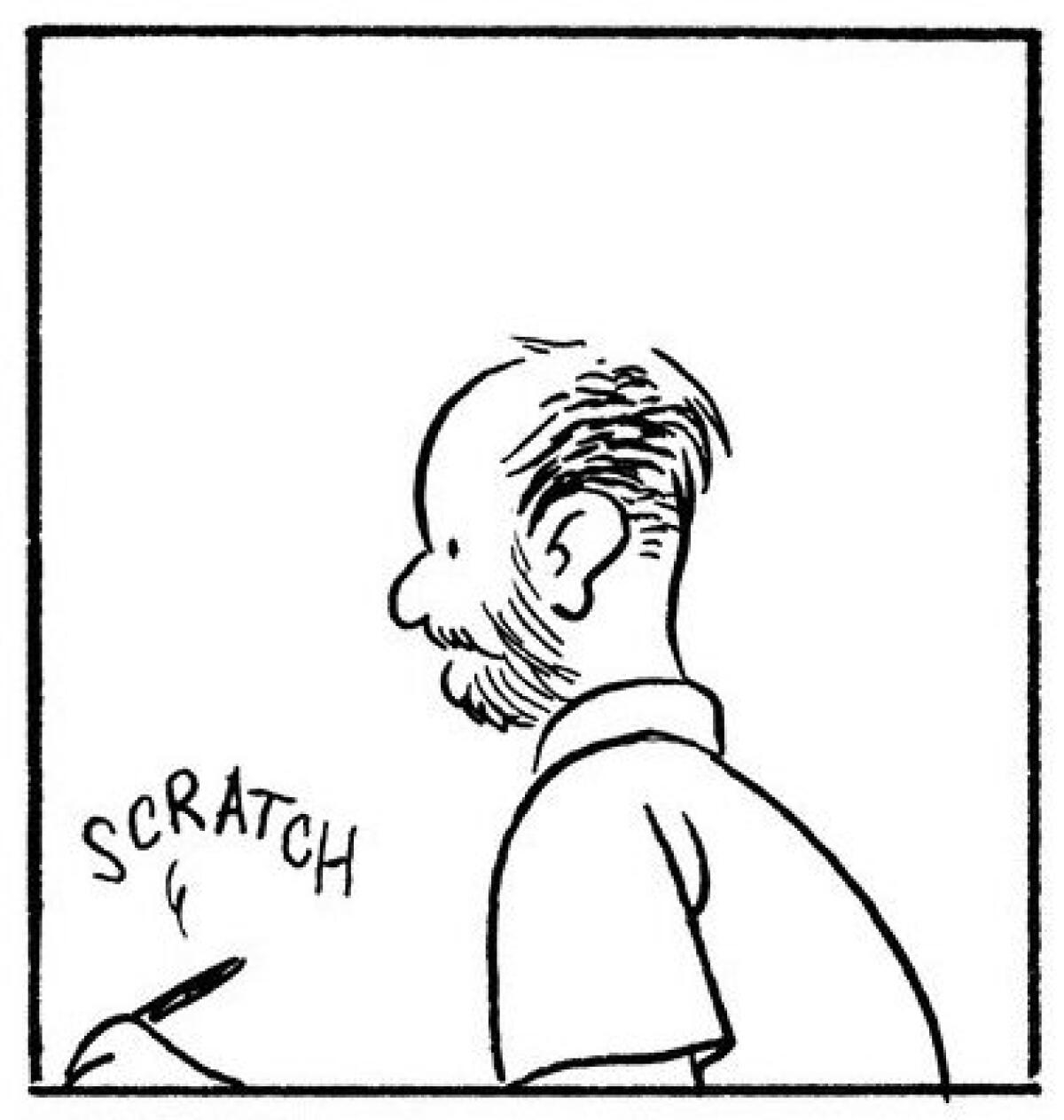
To these stories, Harkham adds the language of cinema, including intercutting and match cuts (where the formal elements of one scene are echoed in the next for visual continuity). A sequence showing an inebriated Seymour and another man behaving abominably with a drunk woman at a party cuts to images of Ida caring for the couple’s infant son. In another, the baby wails as Ida attempts to masturbate. She makes tea and the kettle screams. You can practically hear the intermingling sounds leap off the page.
These visual sequences, in which dialogue is kept to a bare minimum or dispensed with entirely, are among the most powerful in the book — a technique Harkham has deployed to terrific effect in the past. His 2012 collection, “Everything Together: Collected Stories,” featured a wrenching, minimally drawn story about a sailor who abandons his beloved to face adventure on the high seas and then struggles to return home. (The collection won a 2012 Los Angeles Times Book Prize.)
In ‘Seek You,’ Kristen Radtke melds social science and personal anecdotes with hauntingly beautiful imagery, making the lonely feel less alone.
Particularly intriguing to me is the way Harkham, who was born and raised principally in Los Angeles, captures the city’s shabby 1970s profile — in color, but mainly in monochromatic black, white and brown. Gas station signs rise above flat landscapes while Spanish Revival homes and Googie structures grasp at faded panache. Seymour and Ida inhabit not a glam Hollywood Hills home but a moldy court apartment. Harkham avoids the trope of a gleaming Hollywood sign standing triumphantly at the top of a mountain. Probably because, in the ’70s, the sign was falling apart.
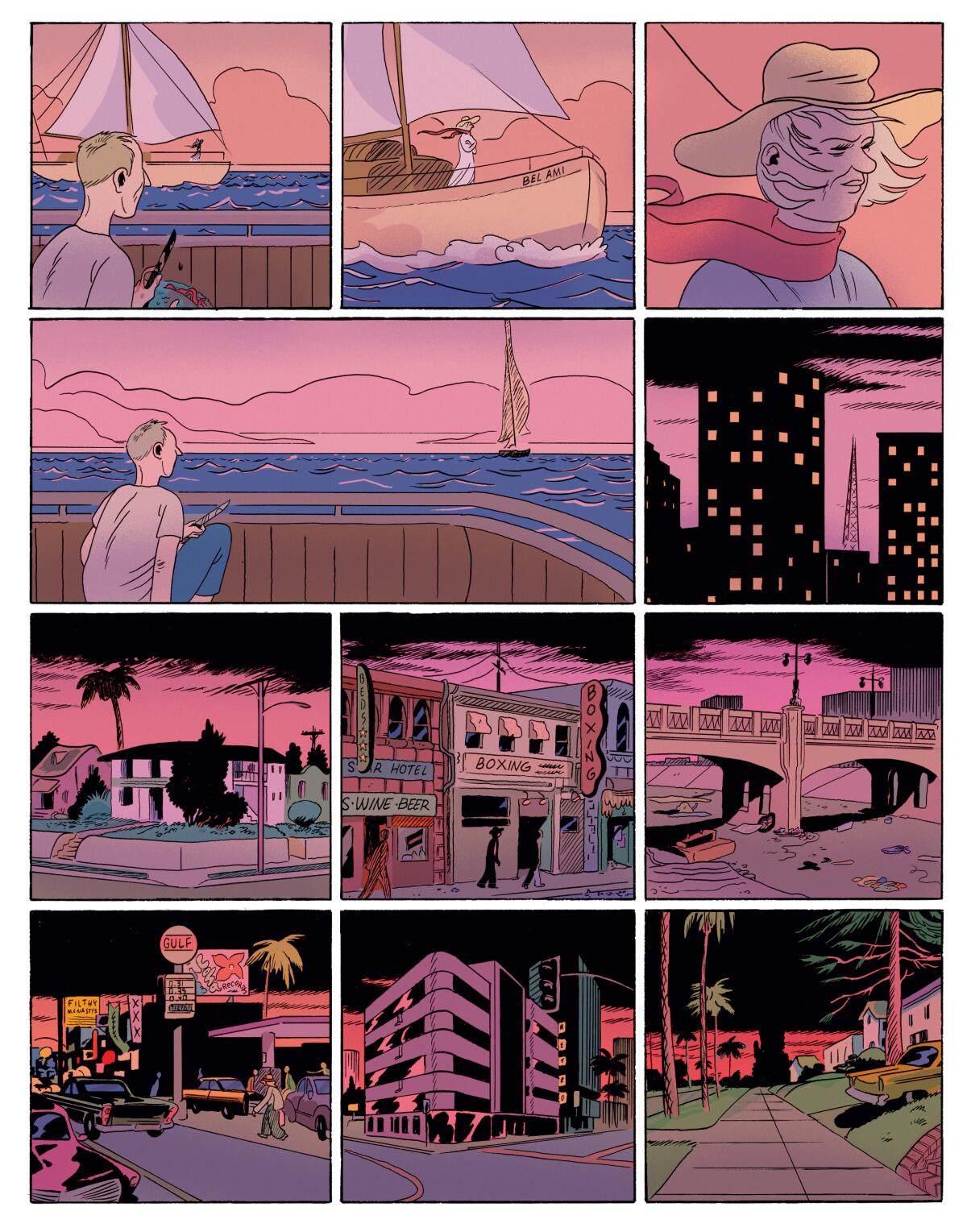
“Blood of the Virgin” is epic in scale for a graphic novel — checking in at nearly 300 pages. Harkham spent 14 years on it, and the labor pays off. His previous collection showed an artist who was still coming into his voice, with drawing styles and storytelling methods that varied from one tale to another. Omnipresent was the influence of comics minimalist Chris Ware, known for his spare drawing style and his tight, diagrammatic sequences.
The new book shows Harkham settled into a style all his own and an expert sense of pacing. Pithy chatter among a multitude of characters occupies a dense grid, but a dream sequence is more loosely rendered, dispensing with the traditional black borders between images. In that scene, Seymour finds himself in a car chase through a landscape that could have been plucked out of one of L.A. photographer Anthony Hernandez’s “Automotive Landscapes” pictures of the 1970s. When he blinks awake, the adventure evaporates and he gets back to work.
“Zev’s Los Angeles,” a memoir by former L.A. County supervisor Zev Yaroslavsky, covers an era when L.A. transformed radically — and does it really well.
Grindhouse movies may have fed the very basic urge to witness sex and death. “Blood of the Virgin” is infinitely more complex, braiding together narratives about love that waxes and wanes, about failure and success, elation and resentment, and, ultimately, what it means to “make it” in a biz that carries the word “exploitation” in its core.
More to Read
Sign up for our Book Club newsletter
Get the latest news, events and more from the Los Angeles Times Book Club, and help us get L.A. reading and talking.
You may occasionally receive promotional content from the Los Angeles Times.
